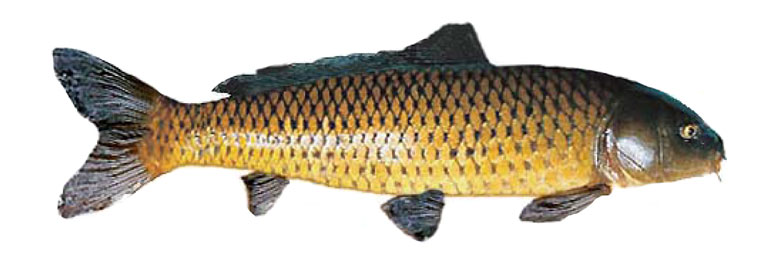Fennel's Guide to Wild Carp Identification

'Wild' or feral carp are the holy grail of the traditional coarse angler. Wild carp are just so rare and vulnerable. Finding and then fishing for them marks the completion of a quest for the traditional angler – where mind set, tackle, environment and fish are in perfect harmony. The result – a wild carp in the net – is a utopian image. Identifying them, however, can be tricky.
Use this guide to identify the differences between cultivated, wild and feral forms of carp.
Identification of Wild Carp
The wild (Sazan) carp is now an endangered species in its native river Danube. Cultivated ‘King’ carp are the ones to found in most waters. Fortunately for the wild carp enthusiast, cultivated carp regress towards a wild-like shape with each generation spawned in the wild. These feral fish are known to anglers as ‘wildies’.
The goal for the traditionalist, and for many at the Priory, is to discover a very old strain of carp – possibly several hundred years old – that have almost completely reverted to a wild shape. This guide will help you identify these very special fish.
First, know what to avoid:
Domesticated/cultivated King Carp (also known as a Common Carp)
- Notch or hump where the head meets the shoulders (the more cultivated the strain, the larger the hump)
- Deep and broad body, with a pronounced belly
- Large mouth with long barbules (often over three inches long)
- Rounded, lobed tail with a thick ‘wrist’ where it meets the body
- Can grow to over 50lbs
- The carp shown here is an example of a European fish-farm strain bred to grow quickly and put on weight. It appears more rounded than many classic 'English' king carp.

Then, know the ideal:
Wild Carp
- No notch or hump where the head meets the shoulders (feral forms may have a slight notch)
- Long streamlined, torpedo-shaped body, tapering towards the tail
- Often has a very blunt ‘snout’ to the face
- Small mouth with relatively short barbules
- Pointed, noticeably-forked tail, fins often appear large for the size of fish.
- Older strains may have dull brassy rather than golden scales
- Rarely grows to more than 10lbs
- The carp shown here is a true sazan carp from the Danube. UK wildies tend to have flat rather than curved shoulders, though the oldest strains still display the very short 'snout' and deeply forked tail.

Then know the in-between
Feral Carp (also known as wildies)
- Small notch where head joins the shoulders
- Long, streamlined body
- Rounded, lobed tail, with a broad wrist where it meets the body
- Can grow to 20lbs
- The older the strain (number of generations of reversion from king carp to feral carp), the more wildie-like the feral fish will appear.
- The fish shown here is a relatively young strain of feral carp. It still has the shoulders typical of king common carp, and the wrist of the tail is still broad.

 This blog is a sample chapter from the book Wild Carp by Fennel Hudson.
This blog is a sample chapter from the book Wild Carp by Fennel Hudson.
If you like it, please also subscribe to the Fennel on Friday weekly email. You'll receive either a blog, video or podcast sent to you in time for the weekend.



